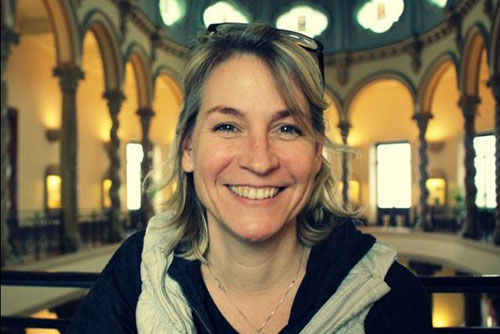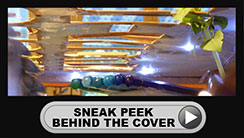Guest Blogs
Knowitall.ch often invites local experts in their field to contribute to their own blogs on our site. This means not only you will benefit from the useful recommendations that we make on our News pages, but you can also profit from some of the great advice and tips that these experts have to make on their favorite subjects. Whilst each of these bloggers has been recommended to us at some point during the evolution of Know-it-all passport and knowitall.ch, obviously we are not able to test out all the suggestions they make on their blogs, nor do we necessarily agree with all their opinions. So if you do find one of their tips useful (or not!), do let us know!
To make these blogs more accessible to you, we have now decided to group them altogether in one section, entitled Guest Blogs, accessible from our main menu bar. We will also post the most recent blogs on the home page of our site in the right hand column.
We are still building up this area of the site, and are looking for bloggers in a number of sections, including Your Home, Travel, and Leisure, so if you feel you have a useful contribution to make in either of these areas, and have the time to submit blog entries approximately every month, then please get in touch!

Port de Pollença
By Rachel Beacher, Journalist
Flight bookings have just opened for this autumn and winter 2017/18. For people planning how to spend the colder months, where better than a picturesque Mallorcan port?
'Everyone – the English, the Americans – they all came to Mallorca in the winter.'
So observed the thriller writer Agatha Christie in 1935 in her short story 'Problem at Pollensa Bay'. Indeed, at the time, the major towns of Mallorca were so busy that the author's hero sought refuge towards the less popular north east coast of the island and by chance came across a pretty and bohemian bolthole – Port de Pollença.
I visited Port de Pollença during those pesky school holidays in October, when the weather is usually failing in Vaud and it is still many months until ski season.
I found it to be enduringly enchanting and unmistakably recognisable from Christie's pre-war portrait.
She describes how a private detective, attempting to escape from his work and from the bothersomeness of people in general, falls in love immediately with 'a small hotel standing on the edge of the sea looking out over a view that in the misty haze of a fine morning had the exquisite vagueness of a Japanese print.'

By Sunita Sehmi, Walk The Talk
In her late 20s, Ms Aradhna Sethi moved out of her protected maternal home and into her new life as a wife in a country far, far away. Little did she grasp that she had, indeed, stepped into the tumultuous life of an expat spouse. Her whole existence changed and she experienced the flavours of life that she never had imagined. She is the author of "The Entrepreneur's Wife: A Survival Guide". The book will make you laugh, cry and help you manage your fears. She uncovers it all and whether you are the spouse, fiancée or girlfriend of an entrepreneur, a business owner yourself or simply a curious sit back you will thoroughly enjoy this book. I was lucky enough to interview Aradhna I really hope you enjoy her interview as much as I did.
Tell us a little bit about you. Who are you, where are your from, etc.…
I was born in India, I grew up in Chandigarh, Jammu, Delhi, Bangalore, Ahmedabad and Mumbai. My father worked with Indian Oil Corporation - and it was due to his promotions that the family moved every three to four years. Although leaving behind friends was always tough, my mother was my teacher, my psychologist, my guide - and my best friend for life. She was a constant source of encouragement as she bubbled with life and energy, telling my brother and I that it was time for a fresh start, time to leave behind what we didn't like and carry forth memories of the pleasant times. Those days, she ensured we kept in touch with our friends through letters. It was always fun.

By Aislinn Delmotte, Settling Here
“Raising Global and Mobile Kids” was the theme of an interactive seminar run by Settling Here in Feb 2017 at Webster University. The expert guest speaker was Kristin Duncombe, a Geneva based psychotherapist and author. The seminar looked specifically at international identity and mental-health, and Kristin spoke about raising children in an international context, and the impact of a global, mobile existence on identity and self-esteem.
The diverse audience included anglophone and francophone parents, who are raising children who are bi-cultural, bi-lingual and also third culture children. It’s not always easy to categorize one’s family and its culture but I liked Kristin’s presented definition of third culture which breaks down into three: namely the culture(s) of the family, the culture of the host country (ies), the expatriate subculture and/or the bi-cultural families subculture. There are a lot of cultures at play for some of our Global kids and the critical tasks for parents are to help their kids understand their culture(s) of origin, help them get along in mainstream society and also deal with being a "hidden immigrant".

by Milena McRae, www.milenamcrae.com
According to Mayo Clinic research, embracing forgiveness and relieving yourself of past pains plays a vital role in our Physical, Emotional and Spiritual health.
On the Physical level, letting go of the past boosts your immune system, lowers your blood pressure improving heart health, relieves acute and chronic pain, improves digestion and balances your hormones. Emotionally, forgiveness reduces stress, anxiety and hostility, enhances self-esteem, increases compassion and opens us to better relationships. On the Spiritual level, we feel re-connected with our closer and wider environment, our world expands and we are open to hear the innate guidance on how to proceed every day in alignment with our greater purpose.
Yet for many, forgiving and letting go doesn't come spontaneously. I would like to share with you the practice I have developed and find really easy to follow.

Photo credit: CNN
By Claire Doole, Claire Doole Communications
The Greeks got it right 2500 years ago. If you want to influence or persuade people you have to show ethos (character), pathos (emotions of the audience) and logos (the logic of the argument).
This principle – known as Aristotle’s Golden Triangle – is the cornerstone of powerful oratory – used by politicians, leaders and laymen when speaking in public.
So on the day we bid farewell to President Obama and usher in four years of Donald Trump as US Commander in Chief, I thought it would be interesting to briefly assess his inaugural address and see how he applied the golden triangle.
Aristotle argued that ethos, pathos and logos were not only equally important but also mutually supportive. For instance, a speaker would be more likely to sweep his audience along with his emotional appeal, if he had previously established his credibility and constructed a robust argument.
But does this hold true with Donald Trump, known for his pathos but not necessarily for his ethos and logos?
To date, Trump has made very few scripted speeches. At many of his rallies he spoke off the cuff, playing to his unstructured conversational style.
Would he have less pathos when constrained by a speech and a teleprompter but more ethos and logos?









